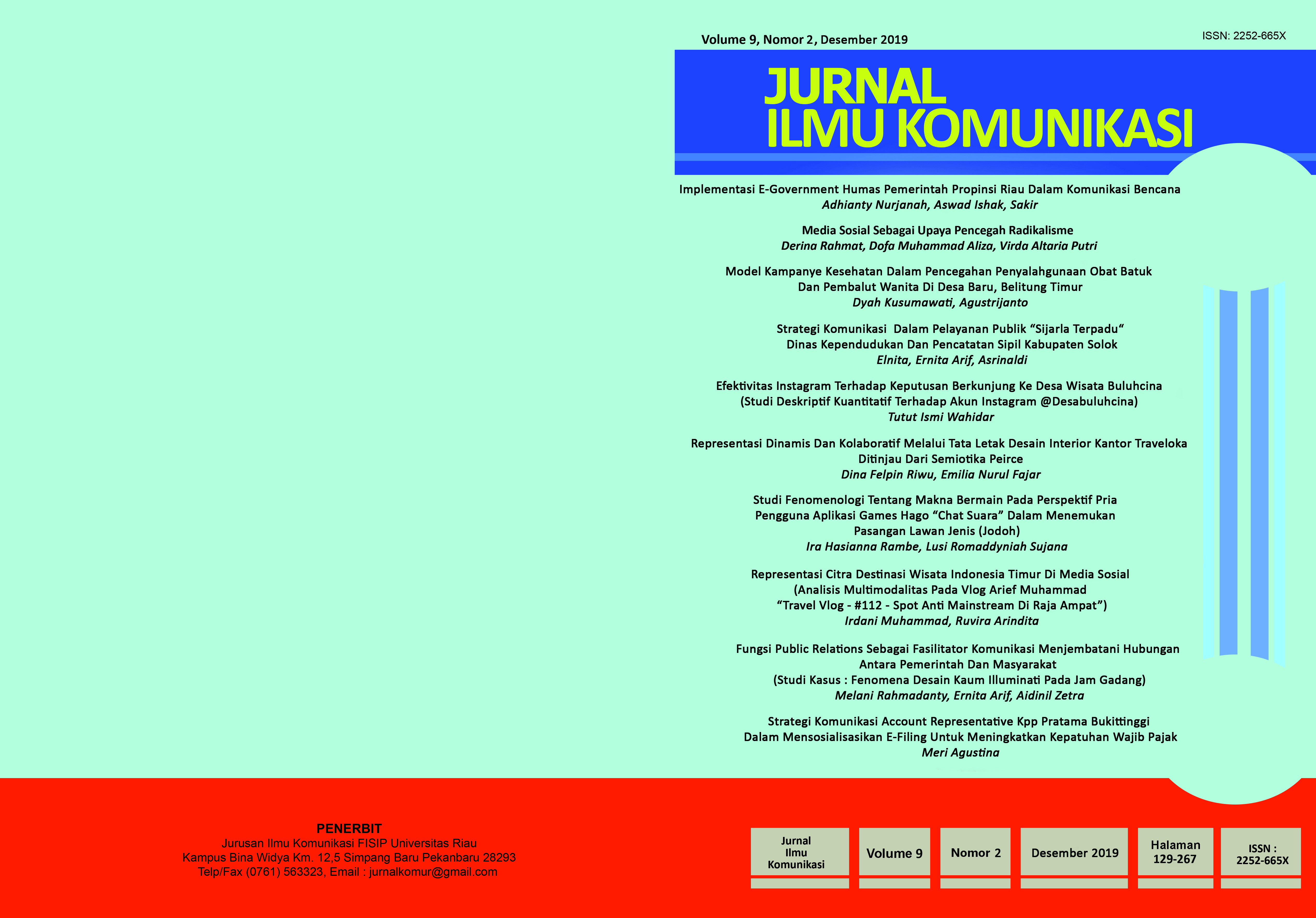REPRESENTASI CITRA DESTINASI WISATA INDONESIA TIMUR DI MEDIA SOSIAL (ANALISIS MULTIMODALITAS PADA VLOG ARIEF MUHAMMAD “TRAVEL VLOG - #112 - SPOT ANTI MAINSTREAM DI RAJA AMPAT”)
DOI:
https://doi.org/10.35967/jkms.v8i1.7365Keywords:
destination images, representation, multimodality, social media, tourism communication, vlogAbstract
The presence of Media social and all things that are in it color the lives of the community, one of which is tourism activities. The Ministry of Tourism collaborates with Influencer Arief Muhammad to promote tourist areas in Raja Ampat through Vlogs. To find out the aims and objectives in the vlog, the researcher used a multimodality / semiotic social analysis from Kress and Leeuwen. After that, a Stuart Hall representation analysis is carried out to understand how the destination image is described in the vlog. The results of this study indicate that there is an emphasis on destination imagery carried out by Arief Muhammad through his vlog. The emphasized image concepts are namely tourist leisure, tourist infrastructure, general infrastructure, . The concept that is highlighted the most is Natural Resources.References
Bugin, Burham. 2015. Komunikasi Pariwisata Tourism
Communication Pemasaran dan Brand Destinasi. Jakarta: Kencana
Effendy, Onong Uchjana. 2009. Human Relations & Public Relations.
Bandung : Mandar Maju
Hall, Stuart (2003). Representation: Cultural Representations and Signifying Practices.London: Sage
Publications:
Jefkins, Frank. 2003. Public Relations. Jakarta : Erlangga
Jørgensen, Louise Gylling. (2004)“An analysis of a destination‟s image and the language of tourism”. Cand.Ling.Merc. (ii) Thesis Department of English.
Kress, Guther & Leeuwen (2006). Reading Images. New York:
Routledge
Lopes, Sérgio Dominique Ferreira. (2011) “Destination image: origins, developments and implications”.Polytechnic Institute of Cávado and Ave Portugal.
Utama, I Gusti Bagus Rai. (2014). Agenda Satting Mass Media. Jakarta: Rajawali Pers.
Downloads
Published
Issue
Section
License
The copyright of the article once accepted for publication shall be assigned to the journal as the publisher of the journal. The intended copyright includes the right to publish the article in various forms (including reprints). The journal maintains the publishing rights to the published articles.
Authors are permitted to disseminate published articles by sharing the link/DOI of the article at the journal. Authors are allowed to use their articles for any legal purposes deemed necessary without written permission from the journal with an acknowledgment of initial publication to this journal.
Jurnal Ilmu Komunikasi (JKMS) is licensed under a Creative Commons Attribution-NonCommercial-ShareAlike 4.0 International License.



